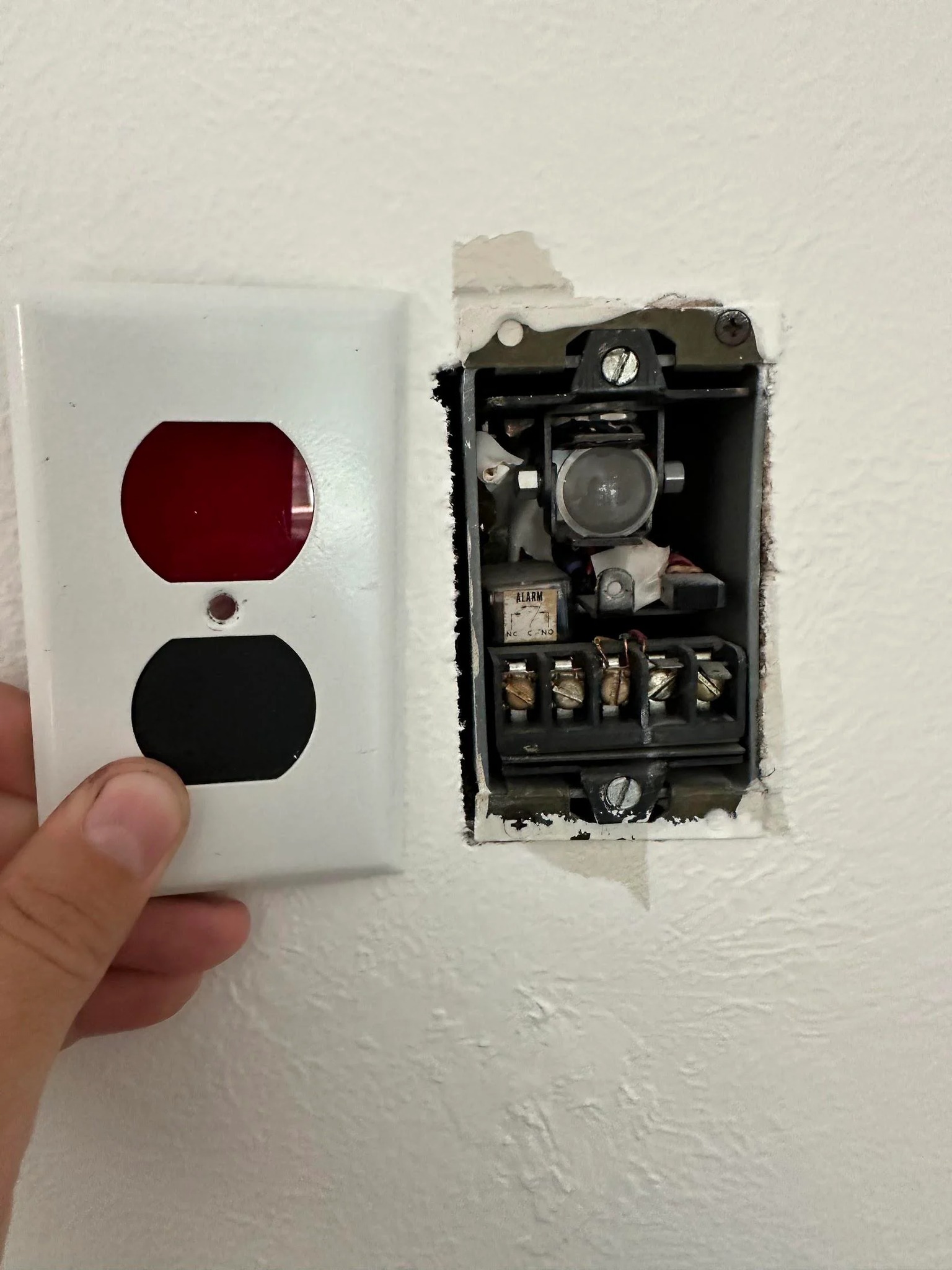Step into an older home—one built sometime in the 1940s or 1950s—and you’ll likely be greeted by creaky floors, classic molding, and quirky little details that don’t quite make sense. Maybe you spot a tiny, reddish or dark glass lens mounted on a hallway wall or tucked into a corner of the ceiling. You might assume it’s a defunct light fixture or some outdated electrical component. But what if it was something more? What if it was actually part of a high-tech security system from a time long before motion detectors, surveillance cameras, or smart home gadgets were ever dreamed of?

That mysterious object could very well be a remnant of the Detect-O-Ray—an ingenious home security system from the 1940s that relied on beams of light to detect motion and protect homes and businesses. It wasn’t flashy, digital, or connected to the internet. But it worked. And it worked using something surprisingly simple: light.
Here’s how it operated. The Detect-O-Ray system used the photoelectric principle. One unit would emit a focused beam of infrared light aimed at a receiver or reflector placed across a room, hallway, or entrance. When the beam remained uninterrupted, the system stayed quiet. But if someone walked through it or even dropped something that broke the light’s path, the system would immediately trigger an alarm. It was like a silent watchman standing guard 24/7—completely invisible unless disturbed.
This early form of motion detection was especially popular in narrow hallways, store entrances, and long corridors, where the chances of someone passing through undetected were slim. And because the beam was infrared and invisible to the human eye, most people had no idea they were even being monitored. There were no blinking lights, no sound cues—just a discreet lens that blended into the architecture of the home or business.
Fast forward to today, and you’ll still occasionally find these little gadgets quietly clinging to the walls of older homes—particularly in historic areas like Hoboken, New Jersey, where preservation is a point of pride. That odd-looking lens or mysterious black disc you keep ignoring? It might actually be a surviving component of a once cutting-edge Detect-O-Ray system. These devices were always installed in matched pairs, facing one another across a space to create a reliable security zone.
In dim lighting, the infrared beam went completely unnoticed. Anyone walking through the area wouldn’t realize they had just broken an invisible line of defense, but the system would know. That’s when the magic—or rather, the technology—would kick in.
While most of these systems are no longer operational today, they serve as incredible artifacts of early home innovation. According to the Made in Chicago Museum, which documents historic inventions and businesses from the Windy City, the Detect-O-Ray was part of a wave of mid-century inventions that laid the groundwork for modern home security. These early systems helped shape the development of motion-activated alarms, laser detectors, and even smart security features we now expect in our homes.
The best part? The technology was simple but genius. It didn’t need a computer or app. It didn’t require monthly subscriptions or cloud storage. All it took was a reliable power source, two aligned sensors, and a beam of light. That simplicity gave homeowners peace of mind decades before the term “smart home” existed. These systems prove that meaningful innovation doesn’t always come wrapped in fancy packaging or with a techy interface. Sometimes, it just takes clever thinking and a basic understanding of physics.
So, the next time you’re exploring an older house and stumble upon a small device that looks out of place—maybe it’s embedded in a wall, hidden behind a coat of paint, or sitting high up near the ceiling—don’t dismiss it. Take a closer look. You may be standing in front of one of the original motion detectors, a forgotten piece of history that quietly protected its space for generations.
It’s pretty amazing to think that decades before modern security companies offered smart cameras and smartphone alerts, homeowners had already figured out how to monitor their homes with nothing but a light beam. The Detect-O-Ray may not be active anymore, but its legacy lives on in every motion-triggered light, alarm system, or laser-secured museum display you see today. What began as a humble invention in the 1940s has evolved into the smart technology we now use every day. And all of it started with a simple, unseen beam of light—and a brilliant idea.





